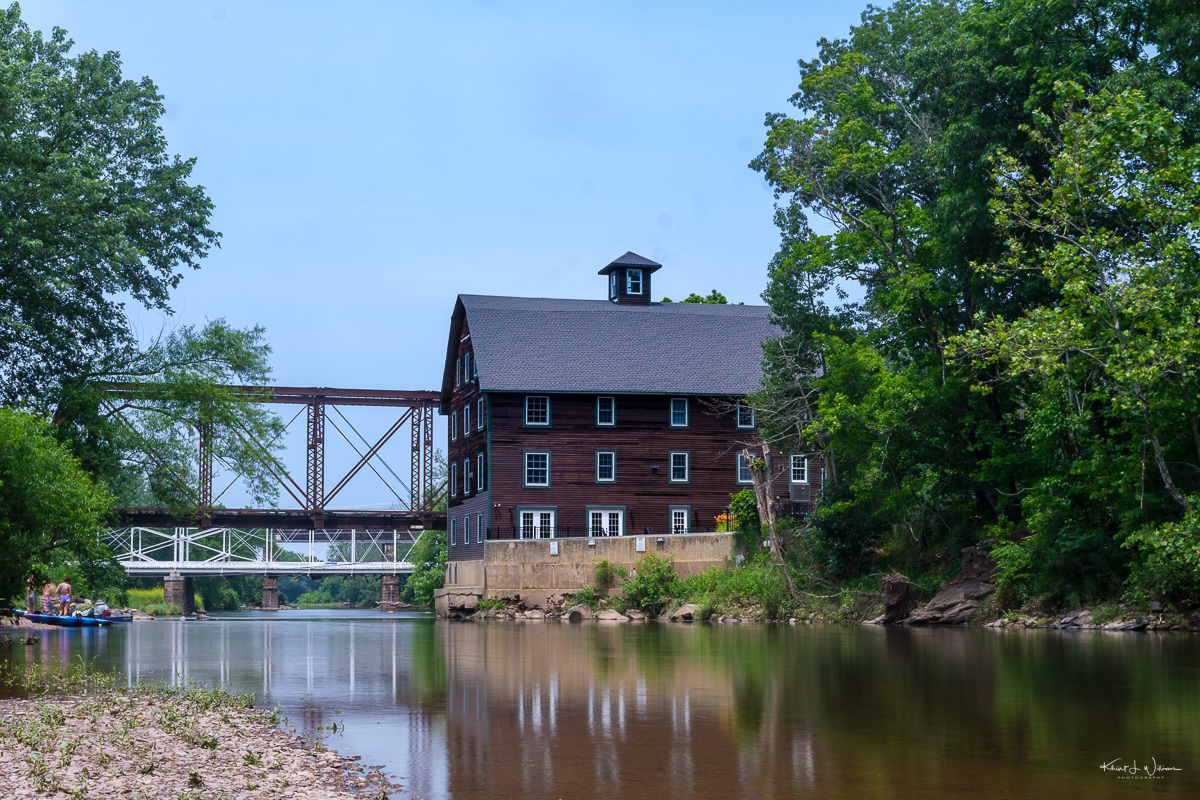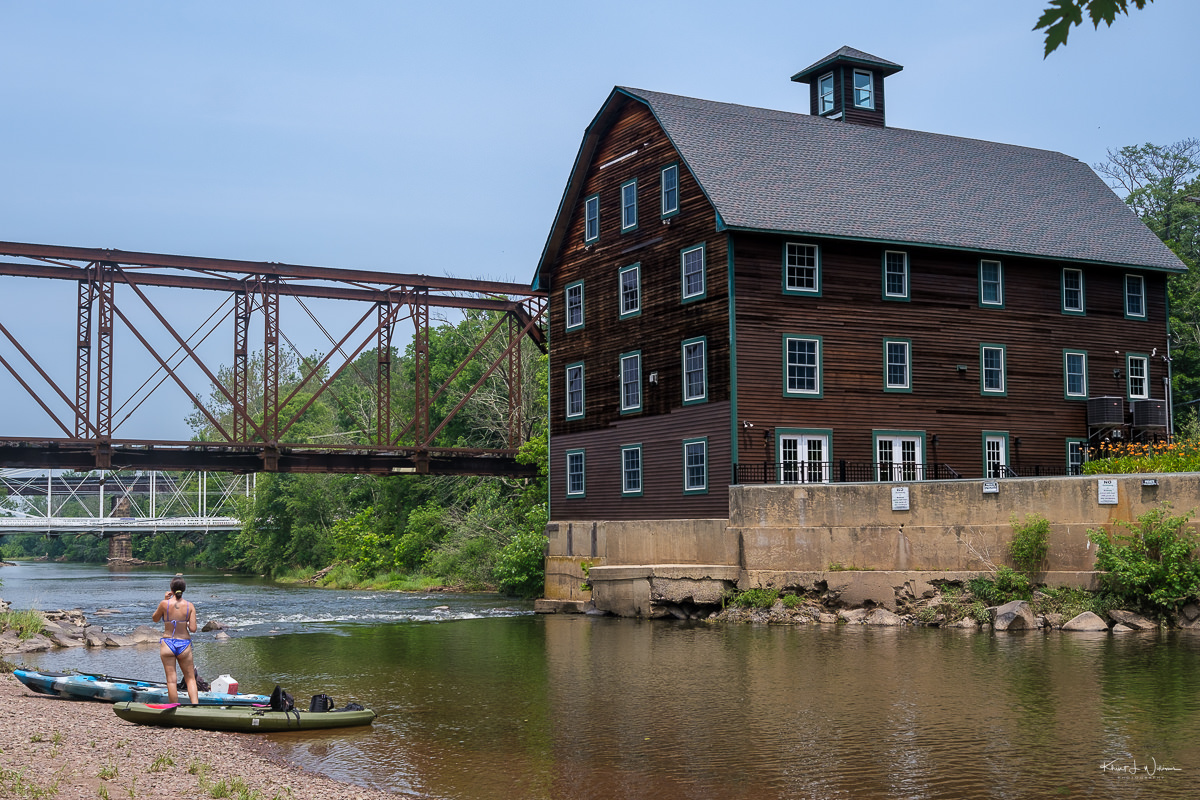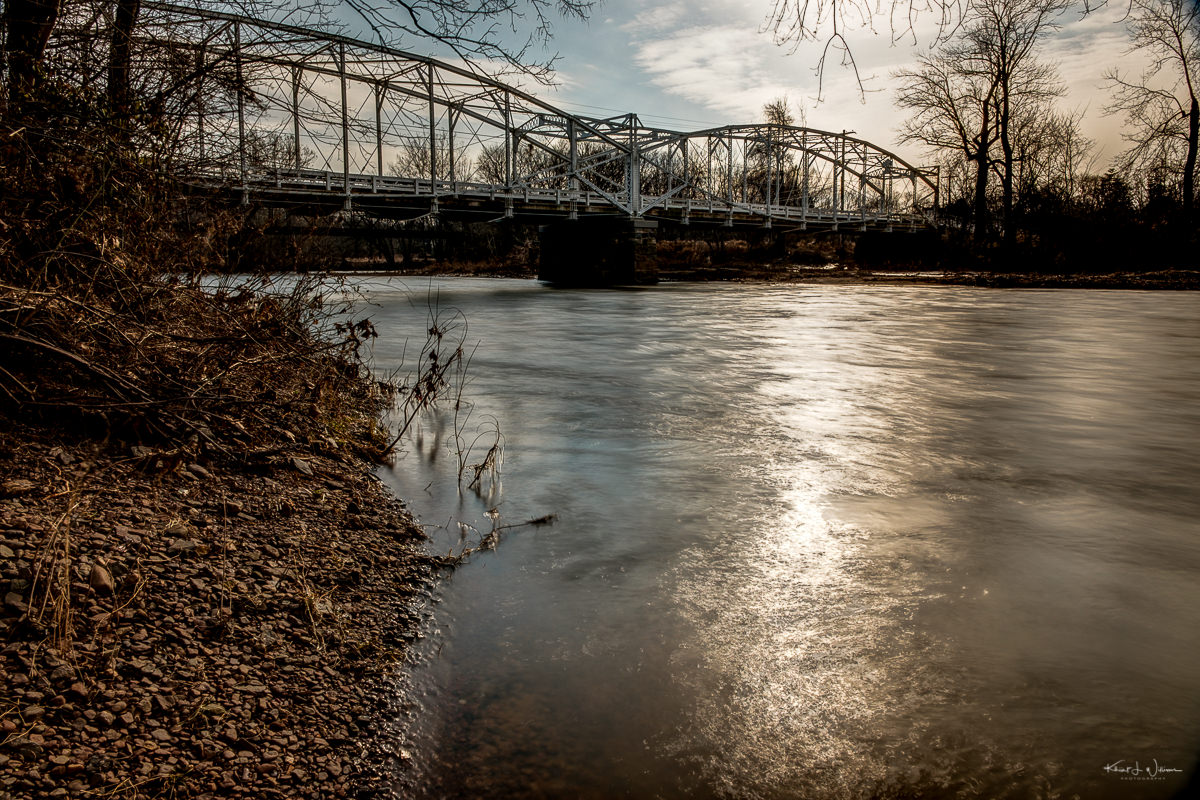The job search was not going well. I was putzing around at home, languishing in social hibernation and isolation. I had not left my home in a week. I had fallen into a rut of perusing LinkedIn in the early morning, submitting job applications, checking email and then retiring to the sofa to catch up on my Netflix binge-watching. It was not healthy. It was time to break the cycle.
I had always wanted to photograph the Neshanic Mills. I set off for South Branch River Trail.
The mill is located on River Road in Neshanic, an unincorporated community and census-designated place within Hillsborough Township. It’s a twenty-minute drive from my home. I wanted to photograph the mill from the banks of the Neshanic River. The easiest access point was from the South Branch River Trail in Neshanic Station. That meant crossing the Neshanic Station Bridge. Crossing this one-lane bridge is challenging as I can’t see if another car has entered the bridge until I am almost on the bridge myself, and backing up onto River Road can be perilous. But I was lucky. There was no traffic at this time of the day.
The air was hot and humid. It was also near noon, and the sun was high. It was far from an ideal time for photography. Determined nonetheless, I trudged along the muddy trail that led to the river bank. I promised myself I would take just a few photographs and then find some lunch. I set up the tripod and snapped a few "close-ups" of the mills just as a small group of kayakers arrived.
The Neshanic Mills has a rich history dating back to the early 18th century. The original Neshanic Mill was built in 1742 by John Opie, an early settler of the region. It was constructed on the banks of the Neshanic River, which provided a reliable source of water power for the mill's operation. Initially, the mill focused on grinding grain into flour, a vital commodity for local farmers. The mill was an integral part of the agricultural community, serving as a hub for processing grains and other agricultural products.

Over the years, the Neshanic Mill underwent several transformations and expansions. The mill was rebuilt in the early 19th century after a fire destroyed the original structure. The new mill featured improved technology, including adding a turbine to harness water power efficiently. Farmers from the surrounding areas brought their grains to be processed at the mill, which helped sustain the agricultural community and provided essential goods for the growing population.
However, the demand for traditional milling methods diminished as the Industrial Revolution progressed. The introduction of large-scale flour mills and advances in transportation led to a decline in small, local mills like the Neshanic Mill. By the mid-20th century, the mill had ceased operations and fell into disrepair.
I moved further along the bank for a more expansive capture.
In recent years, efforts have been made to preserve and restore the Neshanic Mills as a historic landmark. The mill has been listed on the National Register of Historic Places, recognising its significance in local history and architecture. Restoration projects have aimed to maintain the mill's original character and highlight its historical importance to visitors.
It was too hot to continue. The heat became unbearable, draining my energy and dampening my enthusiasm. I packed my gear and drove five minutes to the Riverside Inn in Neshanic Station. I ordered fish tacos and a pint of ale. Past experience has taught me this is the safest meal when dining at an unfamiliar tavern. I was excited that The Riverside Inn had Conclave’s Gravitational Waves on tap.



